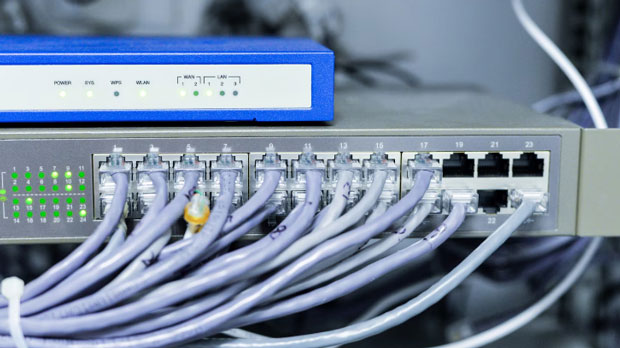The proxy pool functionality is an essential feature for users who require reliable and secure internet access without restrictions, allowing them to manage and utilize multiple proxies effectively. It is especially useful for businesses or individuals engaged in activities that demand high anonymity, privacy, and data scraping. The feature ensures seamless, automated, and optimized access to restricted resources while helping mitigate issues like IP blocking, rate limiting, or geo-restrictions. Users seeking to perform web scraping, handle sensitive information, or test online platforms with anonymity and reliability will find proxy pools invaluable. In this article, we will delve into the types of users who can benefit from proxy pool functionality, explaining the key advantages and practical uses for these diverse groups. 1. Businesses Engaged in Data Scraping and Web CrawlingOne of the primary users of proxy pool functionality are businesses involved in data scraping and web crawling activities. Data scraping involves extracting valuable information from websites, which can then be analyzed for competitive intelligence, market research, or other business purposes. However, many websites employ anti-scraping technologies such as IP blocking, rate-limiting, or CAPTCHAs to prevent large-scale data extraction.Using a proxy pool allows businesses to bypass these restrictions by rotating through different IP addresses. By distributing requests across a large number of proxies, businesses can continue scraping without hitting the limitations set by the target website. This is particularly useful for businesses that require consistent access to real-time data from competitors, news sites, or social media platforms.Furthermore, proxy pools enhance the efficiency of web scraping by preventing any single proxy from being overburdened or blocked. This ensures that the scraping operation runs smoothly without interruptions, maintaining a steady flow of data collection and analysis.2. Marketing and SEO ProfessionalsAnother group of users who can benefit from proxy pool functionality are marketing and SEO professionals. These individuals often need to analyze search engine results, monitor website rankings, or perform competitive analysis across different regions and countries. However, conducting such tasks without proxies can lead to IP bans or rate limits imposed by search engines or websites.For example, SEO professionals often conduct rank tracking for keywords, checking the position of a website's landing pages in search results. If the same IP address repeatedly performs these checks, the search engine may flag this as automated behavior and block access to the results. By using proxy pools, marketing professionals can rotate between different IP addresses, ensuring that each query appears as if it's coming from a different user.Additionally, proxy pools can be used to test a website's accessibility and performance across various locations. By using proxies from different geographic regions, marketing professionals can simulate how users from various countries interact with their website, helping to identify potential issues related to regional restrictions, latency, or user experience.3. E-commerce and Online RetailersE-commerce businesses and online retailers also find proxy pools highly valuable. These businesses often need to monitor product prices, track competitors' inventory levels, and analyze trends in the marketplace. Similar to data scraping, these tasks may involve making multiple requests to a website to gather data on various products or services.Using a proxy pool allows e-commerce businesses to collect this information without triggering anti-scraping measures. Since proxy pools provide multiple IP addresses, e-commerce businesses can gather information from competitors' websites in a way that mimics the behavior of legitimate customers, avoiding any suspicion of scraping.Additionally, proxy pools can help e-commerce businesses bypass geographic restrictions. For example, some online retailers may offer different prices or shipping options based on the customer's location. By using proxies from different countries, e-commerce businesses can access these localized offers and ensure they remain competitive in the global marketplace.4. Researchers and AcademicsResearchers and academics are another category of users who can benefit from the proxy pool functionality. Many research projects involve the collection of data from publicly available sources on the web. This could include scraping academic articles, government publications, or public datasets from various institutions. However, similar to data scraping, excessive requests from a single IP address may lead to IP blocking or other restrictions.In this context, proxy pools provide a solution by enabling researchers to access the required data without facing connectivity issues. They can rotate through multiple proxies to avoid triggering anti-bot protections while gathering data from different sources. Additionally, proxy pools can be used to access region-specific data or resources that might otherwise be restricted to users in certain locations.By ensuring uninterrupted access to web resources, proxy pools facilitate academic research by allowing scholars to collect large amounts of data efficiently. This is particularly important in fields such as social sciences, economics, and data science, where data-driven insights play a significant role.5. Privacy-Conscious IndividualsFor privacy-conscious individuals, proxy pools provide a way to protect their identity while browsing the web. Many people are concerned about online privacy and the tracking of their personal information by websites, advertisers, or even government entities. By using proxies, individuals can mask their real IP addresses and appear as though they are browsing from different locations.Proxy pools add an extra layer of security by rotating IP addresses frequently, making it more difficult for third parties to track an individual's online activities. This is especially beneficial for individuals who want to protect their privacy while accessing sensitive or personal information, such as online banking, or browsing anonymously on public Wi-Fi networks.Additionally, for individuals involved in activities such as online gaming or bypassing geo-restricted content, proxy pools can help them maintain their anonymity and security while accessing platforms or content from different regions.6. Cybersecurity and Penetration Testing ExpertsCybersecurity professionals and penetration testers also find proxy pools highly useful in their work. These professionals are tasked with assessing the security of networks and systems by simulating attacks to identify vulnerabilities. During penetration testing, they often need to test the response of web applications and servers to requests from various sources.Using proxy pools, cybersecurity experts can simulate attacks from different IP addresses, allowing them to test how systems respond to large volumes of traffic or malicious behavior. This helps them identify weaknesses and potential security risks that might otherwise go unnoticed. Proxy pools also enable penetration testers to bypass IP-based security measures during the testing process, ensuring that their assessments are thorough and realistic.Additionally, proxy pools help cybersecurity professionals maintain their own anonymity when conducting ethical hacking or vulnerability assessments. By masking their real IP addresses, they can avoid detection and reduce the risk of being blocked by target systems.ConclusionIn summary, the proxy pool functionality is a valuable tool for a wide range of users. Whether it is for businesses engaged in data scraping, marketing professionals analyzing search engine results, e-commerce businesses monitoring competitors, researchers gathering data, privacy-conscious individuals safeguarding their identity, or cybersecurity experts conducting penetration tests, proxy pools offer significant advantages. By enabling users to rotate IP addresses, proxy pools help bypass restrictions, enhance privacy, and ensure seamless access to online resources. For anyone involved in online activities that require large-scale data collection, anonymity, or access to geo-restricted content, proxy pools are an indispensable tool that improves efficiency, security, and reliability.
Jan 15, 2025





























































